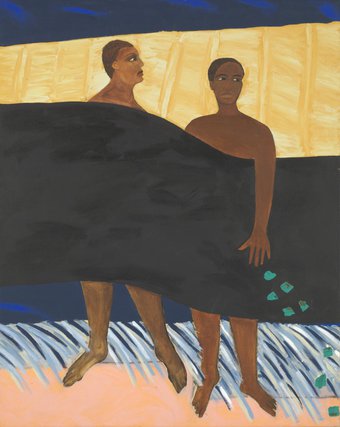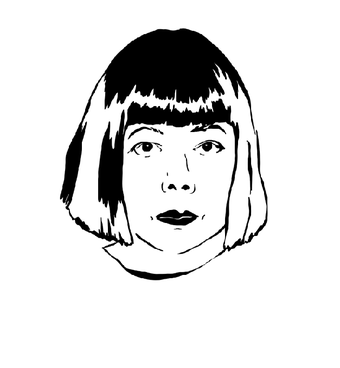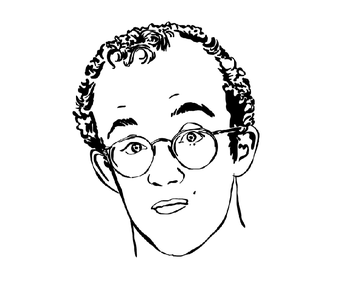
Portrait by Aurélie Garnier
It’s the radiant baby, the barking dog and the dancing man; the badges and the t-shirts; the unmissable mural spelling out CRACK IS WACK. Keith Haring’s career was short but spectacular, and he leaves behind a lasting legacy. From his chalk drawings in city-wide subway stations, to his collaborations with the superstars of his day, Haring’s life was founded on a belief in the power of people to change the world. And he delivered this optimism in a burst of creative energy, as Tate curator Darren Pih explains – visual activism with a bold graphic line.
For the Yes, but why? article series we teamed up with WePresent to tell the stories of Haring and four other game-changing artists. Here we chose three quotes from the article to give you some insight into his world.
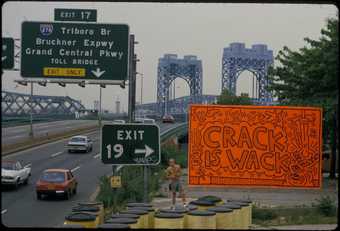
Tseng Kwong Chi
Crack is Wack Mural, 128th Street and Second Avenue, New York 1986
© Muna Tseng Dance Projects, Inc., New York
Keith Haring artwork © Keith Haring Foundation
1. He built a language out of simple positive symbols
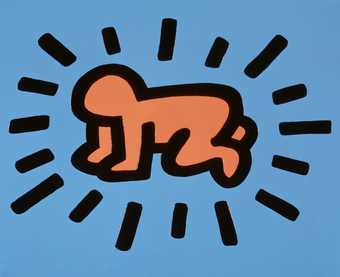
Keith Haring
Untitled (from the Icons series)
© Keith Haring Foundation
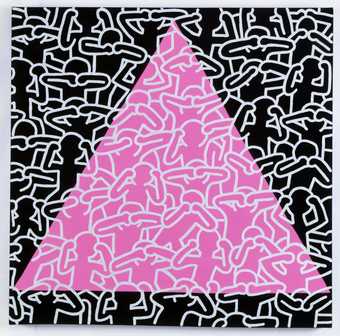
Keith Haring
Silence = Death 1989
© Keith Haring Foundation
The 1980s was the time of the AIDS crisis, the drugs epidemic and cold war, the space races. All these different competing pressures. Rampant capitalism. But also high unemployment. I think New York would've been a pretty broken down city in the 1980s after the crash. Despite all this, despite this sort of toxic swirl, with anti-apartheid and racism, he was creating positive symbols.
I think there was something about the idea of a radiant baby, flying saucer zapping somebody to create new life. I think there's something very optimistic about it. He wasn't criticising his time, he was trying to cut through
it and just point to something more pure, I think.Darren Pih
2. He worked tirelessly to raise awareness of the Aids crisis
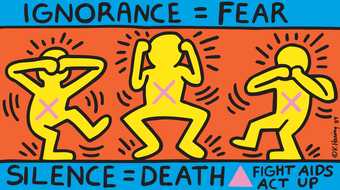
Keith Haring
Ignorance=Fear 1989
© Keith Haring Foundation
There was a period when AIDs was unspoken, it wasn't on the agenda. I think one of the important roles Keith Haring played was to encourage research into AIDS. And open conversation and education about it. To encourage people to not close their eyes to what's happening. I think that was part of the solution.
I think that took great bravery and great strength to be able to think 'actually this is my predicament. But I'm going to use my remaining time on the earth to educate, to make work and be as open as I can be about my situation'. That was an incredible thing.
Darren Pih
3. He turned his art into merchandise for the masses
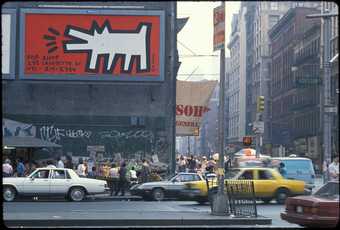
Tseng Kwong Chi
Pop Shop Billboard, New York 1986
© Muna Tseng Dance Projects, Inc. New York
Keith Haring artwork © Keith Haring Foundation
There's definitely something very open handed and sort of democratic and generous about his work. He wasn't making these exclusive objects that were just one unique thing. I guess growing up in the 1960s gave him a sense of idealism and a sort of communality and ideal of collective wealth. He had the idea that a youth culture can be mobilised with a simple slogan such as ban the bombs. Something very simple.
Darren Pih
This is based on an interview between Maisie Skidmore and Tate curator, Darren Pih for story-telling site WePresent.

